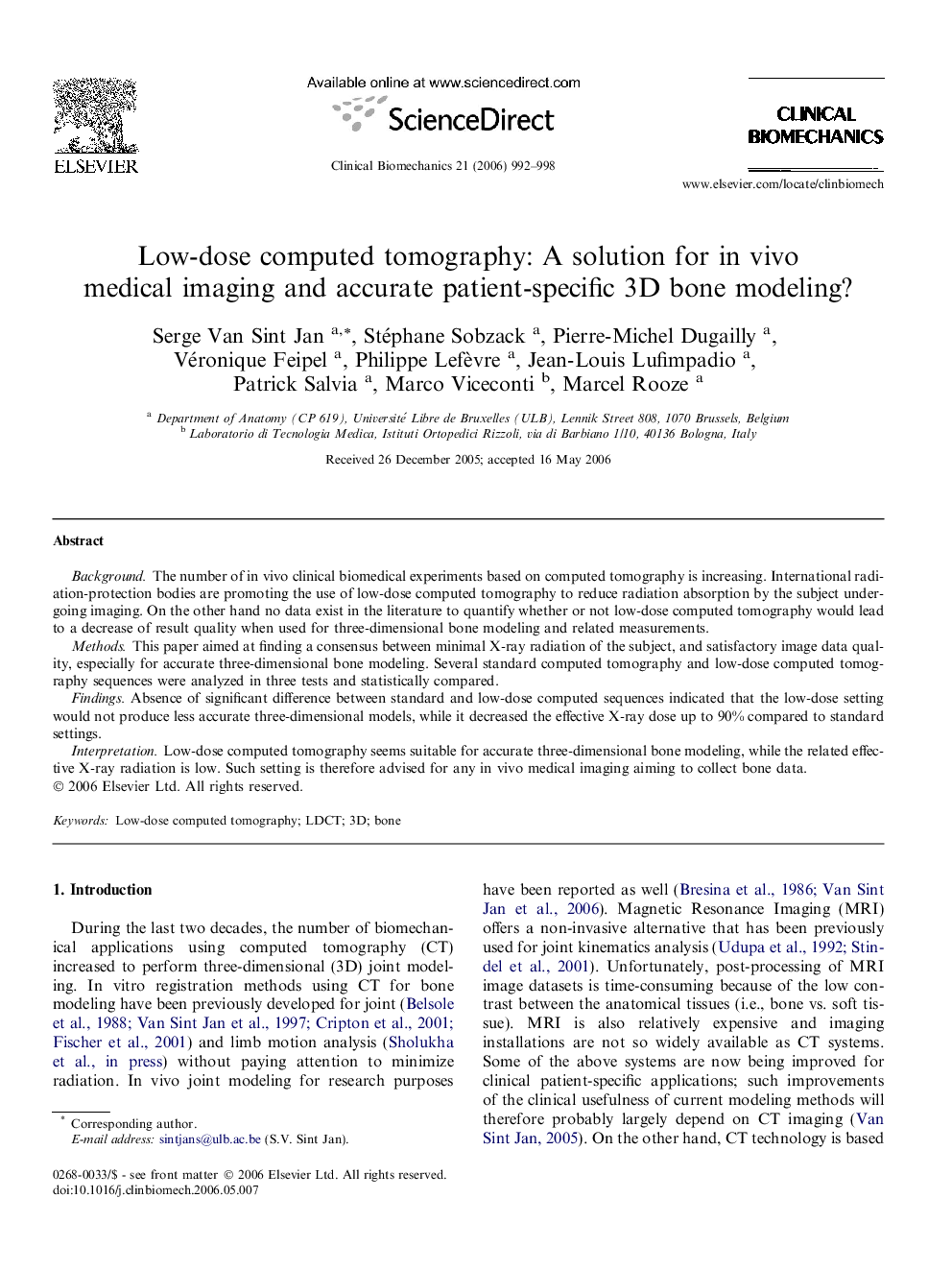| Article ID | Journal | Published Year | Pages | File Type |
|---|---|---|---|---|
| 4051355 | Clinical Biomechanics | 2006 | 7 Pages |
BackgroundThe number of in vivo clinical biomedical experiments based on computed tomography is increasing. International radiation-protection bodies are promoting the use of low-dose computed tomography to reduce radiation absorption by the subject undergoing imaging. On the other hand no data exist in the literature to quantify whether or not low-dose computed tomography would lead to a decrease of result quality when used for three-dimensional bone modeling and related measurements.MethodsThis paper aimed at finding a consensus between minimal X-ray radiation of the subject, and satisfactory image data quality, especially for accurate three-dimensional bone modeling. Several standard computed tomography and low-dose computed tomography sequences were analyzed in three tests and statistically compared.FindingsAbsence of significant difference between standard and low-dose computed sequences indicated that the low-dose setting would not produce less accurate three-dimensional models, while it decreased the effective X-ray dose up to 90% compared to standard settings.InterpretationLow-dose computed tomography seems suitable for accurate three-dimensional bone modeling, while the related effective X-ray radiation is low. Such setting is therefore advised for any in vivo medical imaging aiming to collect bone data.
